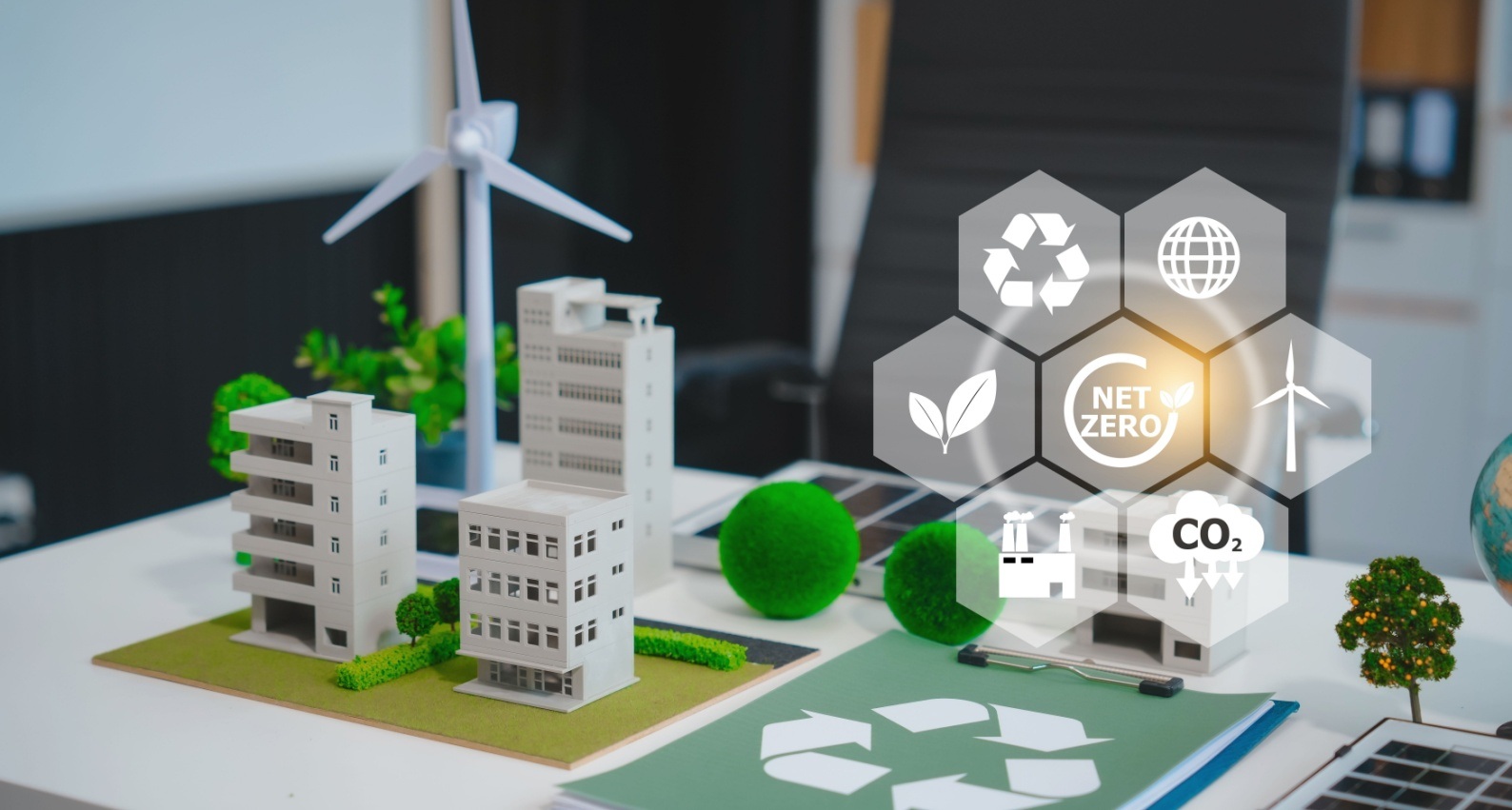NZEBs: Towards a Sustainable Energy Future
Published on 27 Jun, 2024

Net zero energy buildings (NZEBs) are transforming the landscape of sustainable construction through global regulatory support, major technological advancements, and innovative design practices. The surge in patent filings reflects intensified research and development efforts by industry leaders and academic institutions, highlighting the drive toward energy efficiency, renewable energy integration, and advanced energy management systems. As a result, NZEBs are increasingly implemented worldwide, showcasing their potential to significantly reduce energy consumption and environmental impact, setting the stage for a sustainable future.
The idea of net zero energy buildings (NZEBs), which aim to produce as much energy as they consume annually, is becoming increasingly feasible due to rapid advancements in technology and strict governmental regulation. Imagine living or working in a space that not only provides comfort and functionality but also benefits the planet by minimizing its ecological impact.
As governments worldwide implement stringent regulations and companies innovate with patent filings and strategic initiatives, the landscape for NZEBs is evolving rapidly, shaping the future of sustainable building practices globally.
The regulations have been enforced in various regions. For instance, in Asia-Pacific, South Korea has implemented progressive zero-energy standards for buildings effective from 2021 to 2025, while Japan aims for all new houses to achieve net zero energy by 2030. Similarly, India’s Energy Conservation Building Code (ECBC) mandates strict energy efficiency for new commercial buildings, and Taiwan’s Green Building Labeling Program (GBL) certifies NZEBs meeting stringent design and energy criteria. In North America, the White House has introduced the first federal definition of zero-emissions buildings to establish a new industry standard for energy-efficient building performance in the US, and Canada aims for all new buildings to be net zero energy-ready by 2030. In Europe, Germany’s Nearly Zero-Energy Building directive and France’s RT 2020 regulation drive high energy performance in new buildings, complemented by the Netherlands’ requirement for nearly zero-energy buildings by 2021, and supported by EU regulations and incentives.
Even recent patent filings reflect the significant research activity in the domain of NZEBs. The patenting trends highlight intensified research and development efforts toward NZEBs. Patenting activity has shown a steady rise over the past decade, reaching a peak in 2017 on the back of robust technological advances and innovations in sustainable building practices.

Countries such as China, South Korea, the US, and Japan are leading in patent filings related to NZEB technologies, underscoring their commitment to sustainable building solutions and innovation in the domain. While key players such as CSG Holding, State Grid Corp, LG, Mitsubishi, Siemens, Robert Bosh, and ACG Group are the active patent filers in this domain.
Furthermore, universities have been leading the way in promoting net zero buildings, with notable institutions in China making significant contributions. For instance, Tianjin University has developed an intelligent air conditioning system that uses edge computing to conserve energy, while Southeast University has created a robust planning model for NZEBs by accounting for long- and short-term temperature uncertainties using climate data and a multi-energy supply system. Moreover, Dalian University of Technology has developed a zero-energy building supply system using hydrogen energy.
According to research, NZEBs can be achieved using a combination of approaches to make buildings self-sustaining. Major companies are actively leveraging the approaches mentioned below to make substantial strides in sustainable development.
- Energy Efficiency: NZEBs prioritize energy efficiency with advanced insulation, efficient lighting and HVAC systems, and high-performance windows. For instance, Taewon System developed a technology that enhances building energy efficiency by controlling heating, cooling, and lighting devices based on the number of users and user location information. Similarly, Johnson Control developed energy-efficient heat pumps for HVAC systems.
- Onsite Renewable Energy: NZEBs integrate onsite renewable energy sources such as solar panels or wind turbines to diminish dependence on external power. A startup like Aeromine has developed a technology that generates power by harnessing wind accelerated by building edges and vertical airfoils to create a vacuum that drives a propeller.
- Energy Monitoring and Management: Advanced systems track real-time energy use and optimize renewable energy production. Hansung Sysco’s AI-powered energy management system predicts demand and adjusts energy generation accordingly. On similar lines, Honeywell’s invention maintains the required temperature of a building or home using renewable energy sources.
- Building Orientation and Design: NZEBs are strategically designed to optimize the use of natural light and ventilation while cutting down energy losses. Omo Architects Company’s building design algorithm uses local climate data to optimize orientation for passive heating and cooling. IBM’s innovation provides information about the power generation capabilities linked to buildings, partly based on the simulation of the building in its environment.
Innovative startups are also making significant strides in the net zero building domain. For instance, BlocPower (USA) uses data analytics to retrofit buildings with energy-efficient technologies, focusing on underserved communities to reduce energy costs and emissions. Metabuild (Germany) provides software solutions for sustainable, energy-efficient architectural design and green buildings. Lambda Science (US) employs AI to help builders create energy-efficient homes within budget, ensuring regulatory compliance and improved comfort. Nuuka Solutions offers a cloud-based platform integrating data from various systems to optimize building energy use and sustainability.
Some noteworthy examples of NZEBs include London's The Forge showcases a platform strategy to reduce embodied carbon, incorporating solar panels and a green roof. Rotterdam's Floating Office, designed by Powerhouse Company, utilizes sustainable wood construction and integrated solar panels to adapt to climate changes. In Norway, Powerhouse Telemark's angular design and efficient use of solar and geothermal energy earned it the BREEAM Excellent certification. These examples highlight how NZEB principles are applied in diverse geographic contexts, contributing to global efforts toward energy efficiency and sustainability in building construction.
Conclusion
NZEBs are rapidly becoming a cornerstone of sustainable construction, driven by stringent regulations, technological advancements, and global innovation. The collaborative efforts of governments, industry leaders, and academia are crucial in advancing NZEB adoption, paving the way for a future where buildings contribute positively to the environment by achieving energy neutrality.


